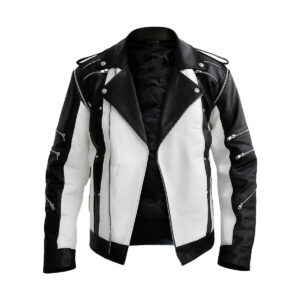Introduction
In today’s fast-evolving digital era, the immersive shopping experience is redefining the way people interact with brands. Traditional shopping is rapidly merging with technology-driven innovations like Augmented Reality (AR), Virtual Reality (VR), and Artificial Intelligence (AI). These technologies are not only improving convenience but also creating emotional connections between consumers and products. This new phase of digital retail is all about engagement, personalization, and experience.
What Is an Immersive Shopping Experience?
An immersive shopping experience is a retail strategy that uses technology to engage customers on a deeper level. It blends physical and digital environments to create a seamless and interactive journey. Instead of simply viewing products online or in-store, shoppers can experience them virtually — try on clothes, visualize furniture in their living room, or interact with a 3D model before making a purchase.
For example, a customer shopping for glasses online can use an AR try-on feature to see how different frames look on their face. Similarly, a home decor buyer can visualize how a sofa fits into their room using a smartphone camera. This fusion of reality and technology builds trust and enhances the buyer’s confidence.
Key Technologies Powering the Immersive Shopping Revolution
The success of the immersive shopping experience depends on the smart integration of advanced technologies. Here are the key drivers:
1. Augmented Reality (AR)
AR overlays digital content onto the real world through smartphones or AR glasses. Retail brands like IKEA, Sephora, and Nike have adopted AR to offer interactive try-on experiences. Shoppers can now visualize products in their own spaces, leading to higher satisfaction and fewer returns.
2. Virtual Reality (VR)
VR takes customers into an entirely digital world using VR headsets. It creates virtual stores or environments where shoppers can explore and purchase products as if they were physically present. Brands like Alibaba and Walmart have experimented with VR showrooms to replicate real-life store experiences from the comfort of home.
3. Artificial Intelligence (AI)
AI personalizes shopping experiences by analyzing user data and predicting preferences. Smart chatbots, recommendation systems, and voice assistants guide users in finding exactly what they want. AI also powers virtual stylists and dynamic pricing systems that enhance user satisfaction and engagement.
4. Mixed Reality (MR) and 3D Visualization
Mixed Reality blends real and virtual environments, allowing users to interact with 3D digital objects as if they were real. This technology is especially valuable for luxury brands and furniture retailers that rely on detailed visual presentation.
Benefits of an Immersive Shopping Experience
The shift toward immersive retail isn’t just a trend — it’s a necessity for brands looking to thrive in a competitive digital market. Here are the top benefits:
1. Enhanced Customer Engagement
Interactive experiences captivate attention longer than static images or videos. Shoppers who can “try before they buy” are more likely to stay engaged and complete their purchases.
2. Increased Conversion Rates
AR and VR help customers visualize products more clearly, reducing uncertainty and hesitation. According to industry reports, businesses using immersive technology see up to a 40% increase in conversion rates.
3. Reduced Return Rates
When customers understand exactly what they are buying, product returns decrease significantly. Visual accuracy builds confidence and reduces post-purchase disappointment.
4. Personalized Shopping Journeys
AI-driven personalization tailors the shopping experience to each individual’s preferences, browsing history, and behavior. This approach leads to higher satisfaction and brand loyalty.
5. Brand Differentiation
Adopting immersive technologies helps businesses stand out in a crowded marketplace. Offering a futuristic shopping experience strengthens brand identity and customer trust.
Examples of Brands Using Immersive Shopping
-
IKEA Place: The IKEA AR app allows customers to see how furniture looks in their home before purchasing.
-
Sephora Virtual Artist: Enables users to virtually try on makeup shades using AR filters.
-
Nike Fit: Uses AI to scan users’ feet and suggest perfect shoe sizes.
-
Gucci Virtual Sneakers: Offers digital-only sneakers for social media avatars — blending fashion with digital innovation.
-
Amazon AR View: Lets shoppers place virtual items in their room to preview before ordering.
These examples show how immersive retail technology can transform traditional shopping into a memorable and interactive journey.
How to Implement an Immersive Shopping Experience
Businesses of all sizes can adopt immersive strategies with the right approach:
-
Understand Customer Needs: Analyze your audience and identify what kind of immersive tools they’d value — AR try-ons, 3D views, or VR showrooms.
-
Choose the Right Technology: Select platforms and tools that fit your product category and budget.
-
Integrate Seamlessly: Ensure your immersive experience works smoothly across mobile, desktop, and in-store touchpoints.
-
Provide Real-Time Support: Use AI chatbots or live support to assist customers during their virtual experiences.
-
Collect and Analyze Data: Use analytics to refine and improve the immersive experience over time.
The Future of Immersive Shopping
The future of retail lies in creating experiences that are not just transactional but emotional and engaging. As AR and VR hardware becomes more affordable, immersive shopping will soon become mainstream. Brands will build virtual stores in the metaverse, where customers can walk through aisles, interact with virtual assistants, and complete purchases with digital wallets.
Additionally, AI and machine learning will continue to enhance personalization, making every shopper feel uniquely valued. The combination of sensory engagement, convenience, and realism will redefine online and offline retail forever.
Conclusion
The immersive shopping experience is more than just a technological upgrade — it’s a revolution in how consumers connect with brands. By combining AR, VR, and AI, businesses can offer shoppers a sense of presence, personalization, and confidence like never before.
As retail continues to evolve, companies that embrace immersive technologies will not only attract more customers but also build lasting relationships. The future of shopping is interactive, emotional, and truly immersive.




